Driving a car with a rough idle is stressful and even a bit embarrassing. Thankfully, a rough idle can usually be fixed relatively inexpensively.
When a car idles rough but drives smooth, it is usually caused by a problem with the ignition system, the fuel injection system, or a vacuum leak.
The first thing to check is if the check engine light is on and what codes it is throwing.
The next thing to troubleshoot will be the spark plugs, plug wires, and ignition coils, then the fuel injectors and fuel pump.
All these things can be troubleshot but a layman mechanic with tutorials off youtube and basic handtools.
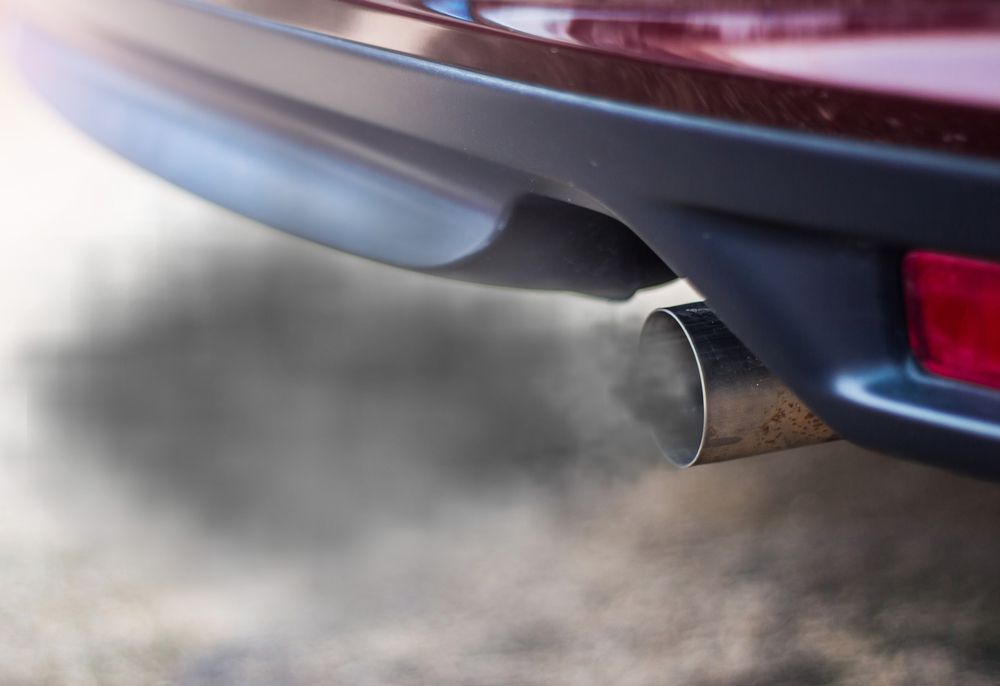 Black smoke coming from your exhaust can accompany a rough idle.
Black smoke coming from your exhaust can accompany a rough idle.
What Causes Rough Idle At Low RPM But Smooths Out At Higher RPM?
A few different things can cause a rough idling engine that smooths out at a higher rpm.
First, is the engine smoothing out at a higher rpm, or is the engine misfire harder to distinguish? Often, a misfiring engine will sound better at a higher rpm to an untrained ear, but the misfire still exists.
In any case, a rough idle is usually caused by a handful of culprits, which we'll go over below. We'll also go over some ways to troubleshoot the problem, as well as some fixes.
Vacuum Leak
Vacuum leaks are one of the most common causes of a rough idling engine.
A vacuum leak will lead to a multitude of problems, like too much air entering the combustion chamber, which leads to an improper air fuel mixture, which in turn will cause a rough idle.
A vacuum leak will also cause problems with engine components like the exhaust gas recirculation valve, which is operated by vacuum pressure and are critical to a smooth idle speed.
Troubleshooting a vacuum leak
Vacuum pressure (negative pressure) is sourced from the intake manifold and is piped through vacuum hoses to the various engine components that require it.
When there is a vacuum leak, the intake will suck in air from around the engine into the intake rather than just from the intake as the system is designed for.
WARNING: Carb cleaner is highly flammable, and you risk an engine bay fire using this troubleshooting method. If you decide to proceed, spray the carb cleaner sparingly and give it time to evaporate away between sprays.
Therefore, if you spray carb cleaner around the engine and there is a vacuum leak, the engine's idle speed will increase as the carb cleaner enters the combustion chamber by way of the vacuum leak.
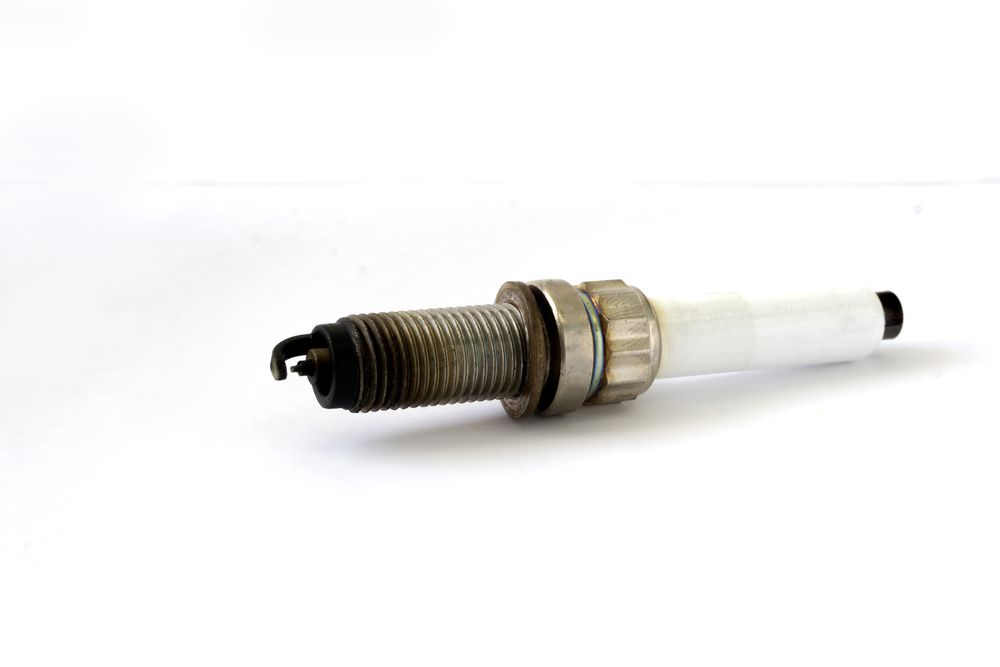 A fouled spark plug.
A fouled spark plug.
Bad Spark Plugs
A bad spark plug will definitely make a car idle rough. In addition, spark plugs will build up carbon, wear out over time, and generally need to be replaced every 100k miles.
Troubleshooting bad spark plugs
One easy way to troubleshoot spark plugs on a rough idling engine is simply unplugging each spark plug wire one by one while listening for a change, or more specifically, no change in the engine's idle.
If you pull a plug wire off one of the cylinders and there is no change in engine idle, then you know that the cylinder was not firing in the first place.
You still have to narrow down the cause of the misfire to the sparkplug, the plug wire, or a faulty ignition coil. You can do this by measuring the resistance of the components and checking that they are within spec.
Dirty Fuel Injectors
As you can imagine, fuel injectors that are plugged, obstructed, or just not working right can lead to rough idling.
You can test a fuel injector's functionality by placing a screwdriver against it to feel the injector pulse each time it actuates.
Fuel injector cleaner is available as a gasoline additive at most automotive parts stores.
Various online tutorials demonstrate removing fuel injectors and cleaning them, although it is quite time-consuming.
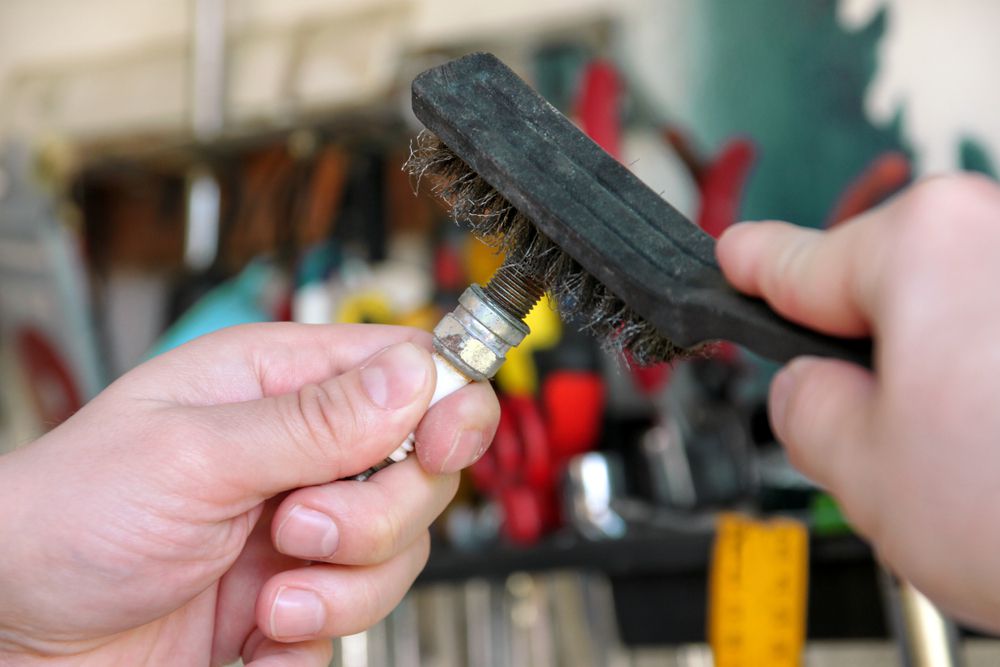 Sparkplugs can be cleaned if they just have a light carbon coating.
Sparkplugs can be cleaned if they just have a light carbon coating.
Faulty Spark Plug Wires
Faulty plug wires are a common cause of misfires that cause rough idling.
Troubleshooting faulty plug wires
As mentioned above, you can narrow your misfire to either the spark plug, spark plug wire, or ignition coil of a specific cylinder by disconnecting the plug wires one by one until you don't notice a change in the engine's idle.
This will signify that the ignition components weren't working for that particular cylinder.
The next step will be to narrow down the culprit to the plug wire, which you can do by testing its continuity and resistance with a multimeter.
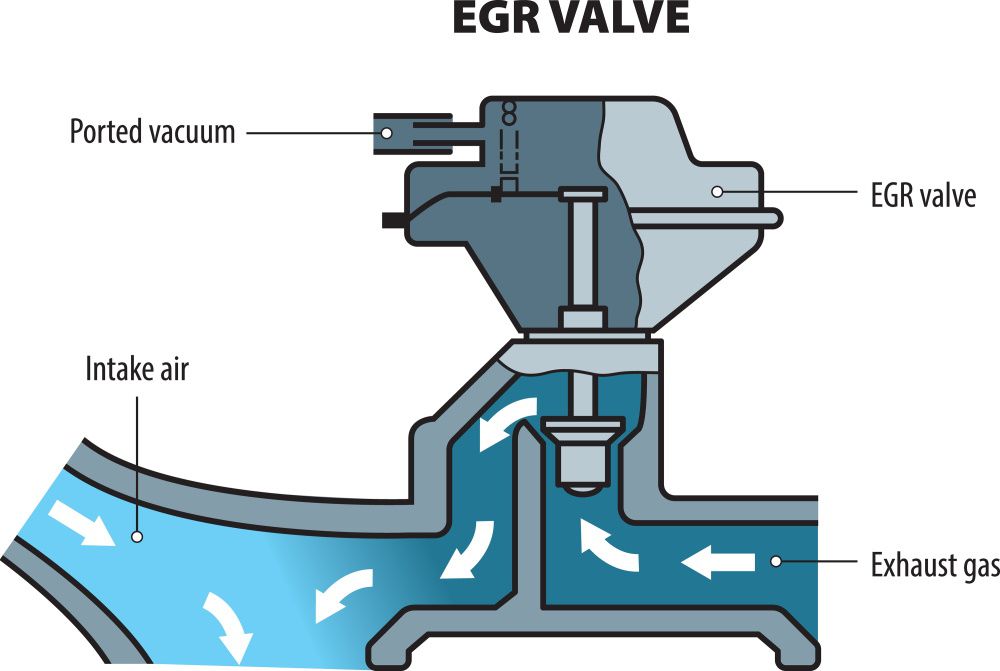 EGR Valve cross section.
EGR Valve cross section.
Faulty EGR Valve
The EGR valve (exhaust gas recirculation valve) is part of the emissions system on your vehicle; its purpose is to recirculate exhaust gasses back into the intake manifold to be part of the combustion process again. This ensures that any unburnt toxins are burnt on their next pass through the combustion chamber.
When the EGR valve works improperly, the vehicle's computer will be confused. In addition, it may send improper signals to the ignition and fuel injection systems, causing a rough idle and poor fuel economy. Generally, the check engine light will come on if your EGR valve is failing.
Oxygen Sensor
The vehicle's oxygen sensor measures the exhaust's oxygen levels. If the oxygen level is too low, the vehicle is running rich (too much fuel), while if the oxygen level is too high, the vehicle is running lean (not enough fuel).
The car's computer will adjust the air-fuel mixture based on the oxygen sensor to keep the engine running optimally.
Faulty oxygen sensors will trigger a check engine light and cause a rough idle, poor fuel economy, and perhaps a sulfur smell from the exhaust.
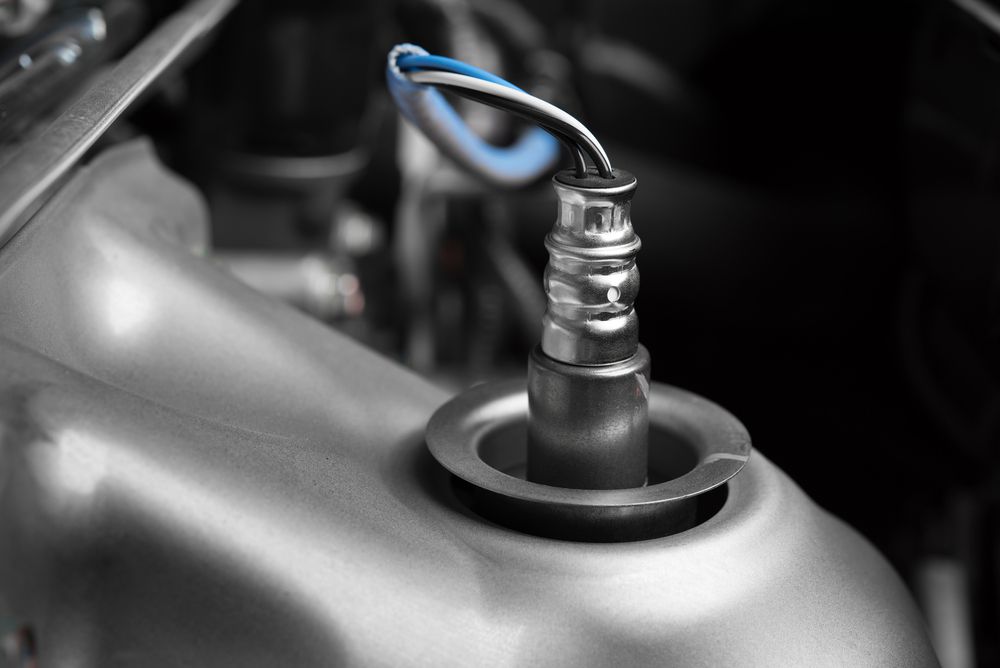 Oxygen sensor
Oxygen sensor
PCV Valve
A PCV valve (positive crankcase pressure valve) is a one-way valve in the engine's crankcase that allows gases that bypass the engine's piston rings to escape.
If the PCV valve is plugged, the engine's internals may pressure up to the point of damaging seals, sensors, etc.
If the PCV fails and is stuck open, it will allow an abnormally large amount of air into the combustion chamber, causing the engine to run lean and possibly idle rough.
Fuel Pump
The fuel pump is what pumps the fuel from the vehicle's fuel tank to the injectors at the appropriate fuel pressure.
A failing fuel pump is sometimes noticed because the vehicle becomes difficult to start. Debris and corrosion in the fuel tank can also sometimes clog a fuel pump and fuel lines causing problems that include a rough idle.
Dirty Air Filter
An air filter is what filter's the air that your vehicle's intake sucks in from the outside atmosphere. Over time the filter will become plugged up with debris and dust, and it will need to be replaced, or some filters can be cleaned.
A dirty air filter is restrictive and will make your engine run rich, which could rough your engine idle.
Can Low Oil Cause Rough Idle?
A low oil level could lead to oil starvation which could cause severe engine damage.
A symptom of a low oil level in your car could be your car idling roughly, but if a low oil level indeed causes it, the problem may quickly progress to catastrophic engine damage.
If you think your engine oil level is extremely low, it's advisable not to turn the motor on until you have had a chance to top up the oil level.
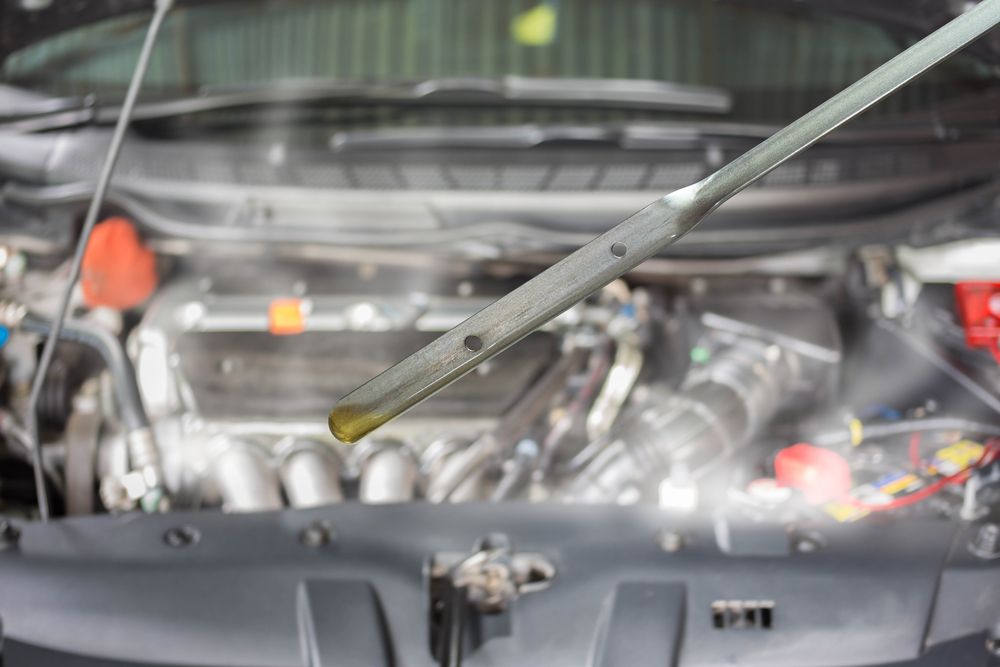 Oil dip stick showing low oil level.
Oil dip stick showing low oil level.
Will An Oil Change Fix Rough Idle?
Not changing your oil regularly could lead to your vehicle having a rough engine idle due to excessive wear and tear to the friction surfaces within the engine.
However, once the mechanical damage is done, it is permanent and won't be fixed by simply changing the oil.
Therefore in 99.9% of cases, changing the oil will not fix a rough idle.
Is It Ok To Drive With A Rough Idle?
In most cases, driving a vehicle with a rough idle for a short period of time is perfectly fine.
This is particularly true if you know the problem is something like a faulty spark plug or bad EGR valve that won't cause engine damage if you drive a week or so before getting it repaired.
However, running a car low on oil could lead to severe engine damage, and even something like a faulty spark plug can lead to unburnt fuel exiting into the exhaust system, leading to expensive fixes.
How Much Does It Cost To Fix A Rough Idle?
How much it costs to fix a rough idle will depend on what is causing the problem in the first place.
Something like a faulty spark plug or plug wire that you can replace yourself will only cost you upwards of $20.
An oxygen sensor will only cost you $40 to $80 to get replaced, while a problem with your fuel injectors could be over $1000, depending on the make and model of your vehicle.
Conclusion
You may have many issues if your car idles roughly but smooths out once you start driving, including a bad spark plug or plug wire, or a problem with the fuel system, including the fuel pump or injectors.
The idle air control valve or throttle body also causes idling problems.
In most cases, in modern vehicles, an idling problem will be accompanied by a check engine light which will help point you in the right direction if you have a code reader.